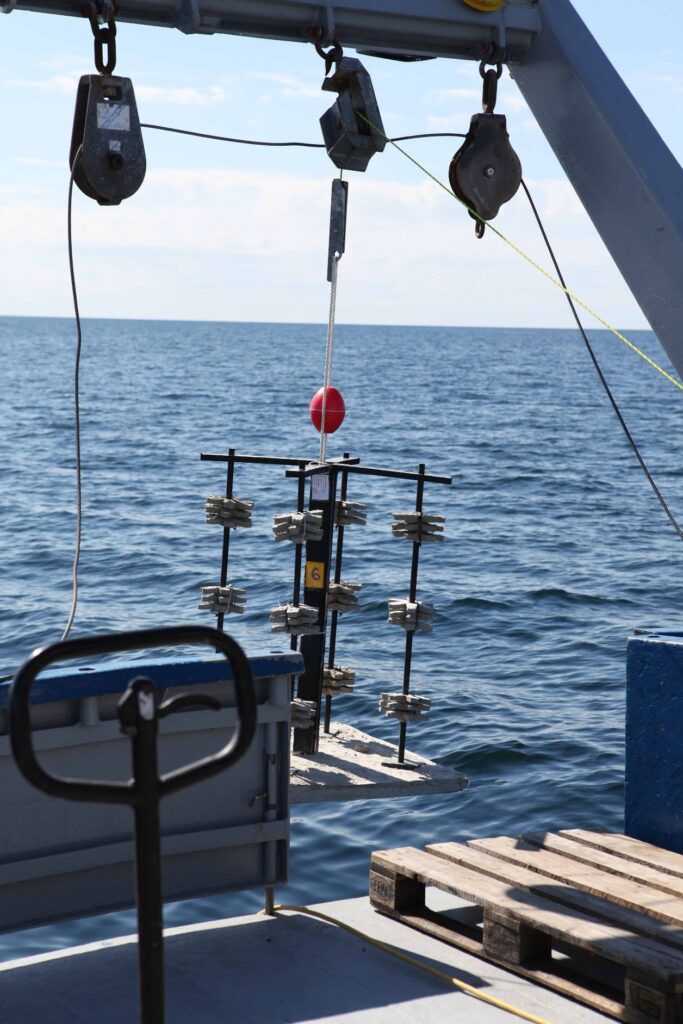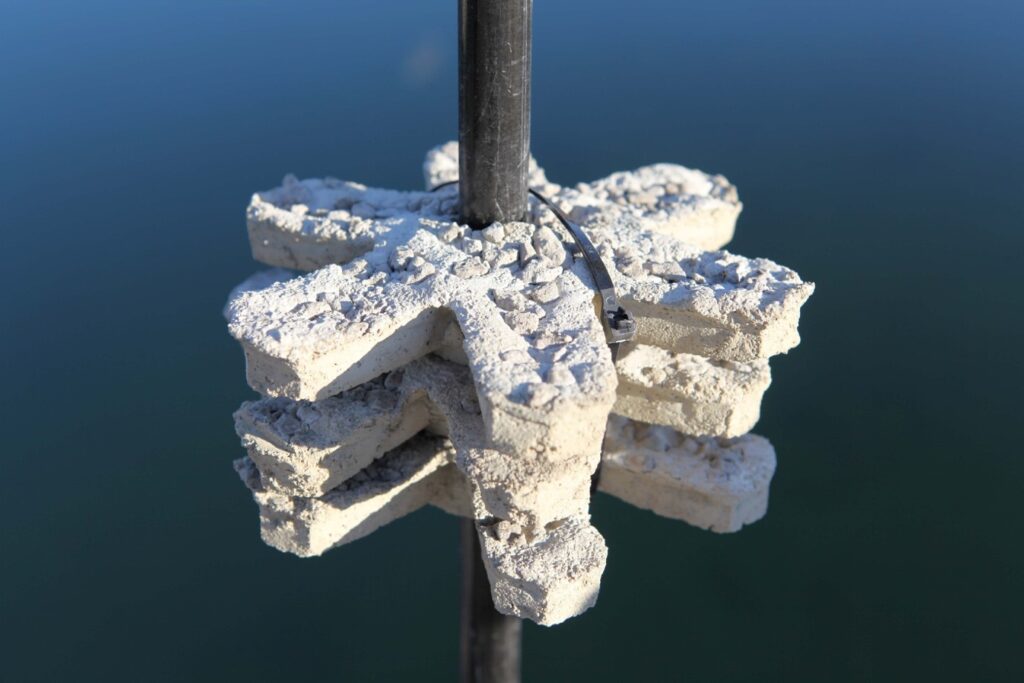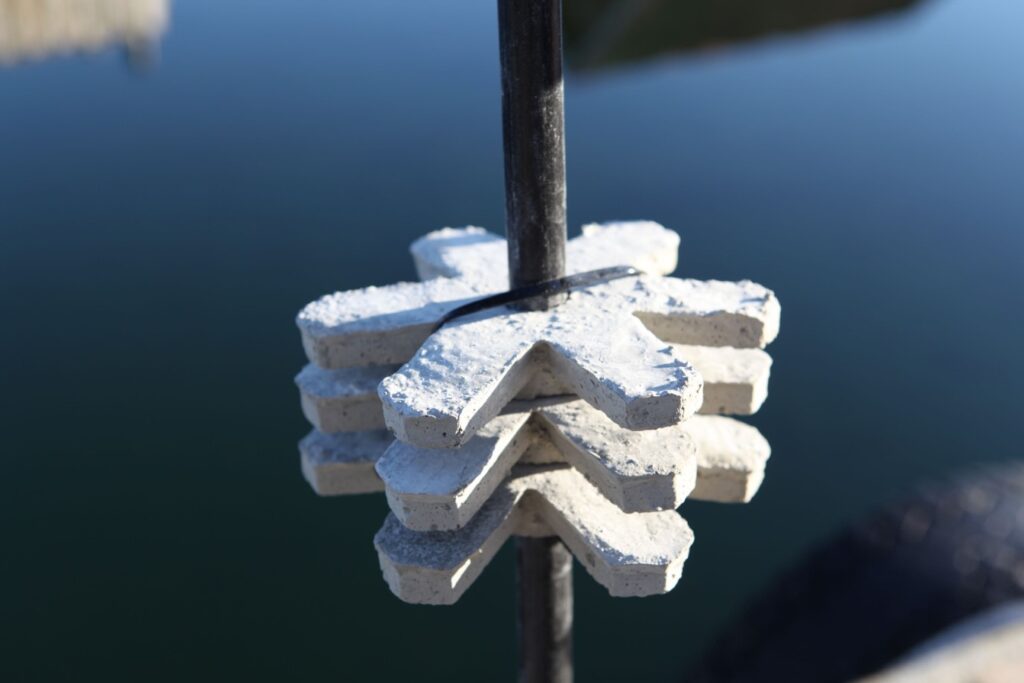Innan vi placerar ut de konstgjorda reven på bottnarna är det viktigt att undersöka om det finns korall-larver i vattnet på de sex lokalerna vi ska restaurera, och vilket substrat de föredrar att sätta sig på. Under vårvintern har vi därför sjösatt ställningar med olika substrat. De här ställningarna ska stå ute i cirka 1 ½ år. Det larverna har fått att välja mellan är olika betongstrukturer, med eller utan metallurgisk slagg ingjutet, och olika betongblandningar. På ställningarna sitter det grupper med substrat på tre olika nivåer över havsbottnen (30, 60 och 90 cm) för att vi ska veta vilken nivå de flesta larverna sätter sig på. Det här gör att vi sedan får lättare att bestämma hur höga våra konstgjorda rev ska vara. Reven behöver vara tillräckligt höga för att ge larverna ytor som är ordentligt strömexponerade för att sediment ska spolas bort. Men de får samtidigt inte vara för höga, för ju högre de är desto större är risken att de kollapsar efter en tid. Vi vill att våra konstgjorda rev ska vara en stabil bas för de nya korallreven som etableras på dem, så länge så att korallrevet ska kunna bära sig självt. Det kan ta många decennier eller kanske hundratals år.
Field trials with different substrates
Before placing out artificial reefs on the seafloor, it is important to examine whether there are coral larvae available at all the different sites. We also want to know their preferences when it comes to the substrates. During this winter and early spring, we have deployed several settling racks with different substrates. These will stay on the seafloor for about 1 ½ years. What the larvae has been given to choose from, are different concrete structures, with or without metallurgic slag attached, and different concrete mixtures. The racks are constructed such that the substrates are grouped at three different levels above the seafloor (at 30, 60, and 90 cm) so that we will know at what level most larvae settle. This will help us decide how high the artificial reefs should be. The artificial reefs must be high enough to give the new recruits a spot that is sufficiently exposed to the passing currents to flush away sediments. But at the same time, we don’t want them to be too high, since the higher they are, the higher the risk of collapse will be. We want our artificial reefs to be a stable base for the new reef that develops on top of them for as long as it takes for the new reef to be able to carry its own weight. And this can take many decades, or even centuries.

En ställning med olika substrat på väg ner till havsbottnen på Grisbådarna. /
One of the settling racks on the way to the seafloor at Grisbådarna.
Foto/Photo Susanna Strömberg
Betongstjärnor med och utan metallurgisk slagg på ytan. / Concrete stars with and without metallurgic slag attached.
Foto/Photo: Susanna Strömberg
Betongstjärnor med och utan metallurgisk slagg på ytan. / Concrete stars with and without metallurgic slag attached.
Foto/Photo: Susanna Strömberg





